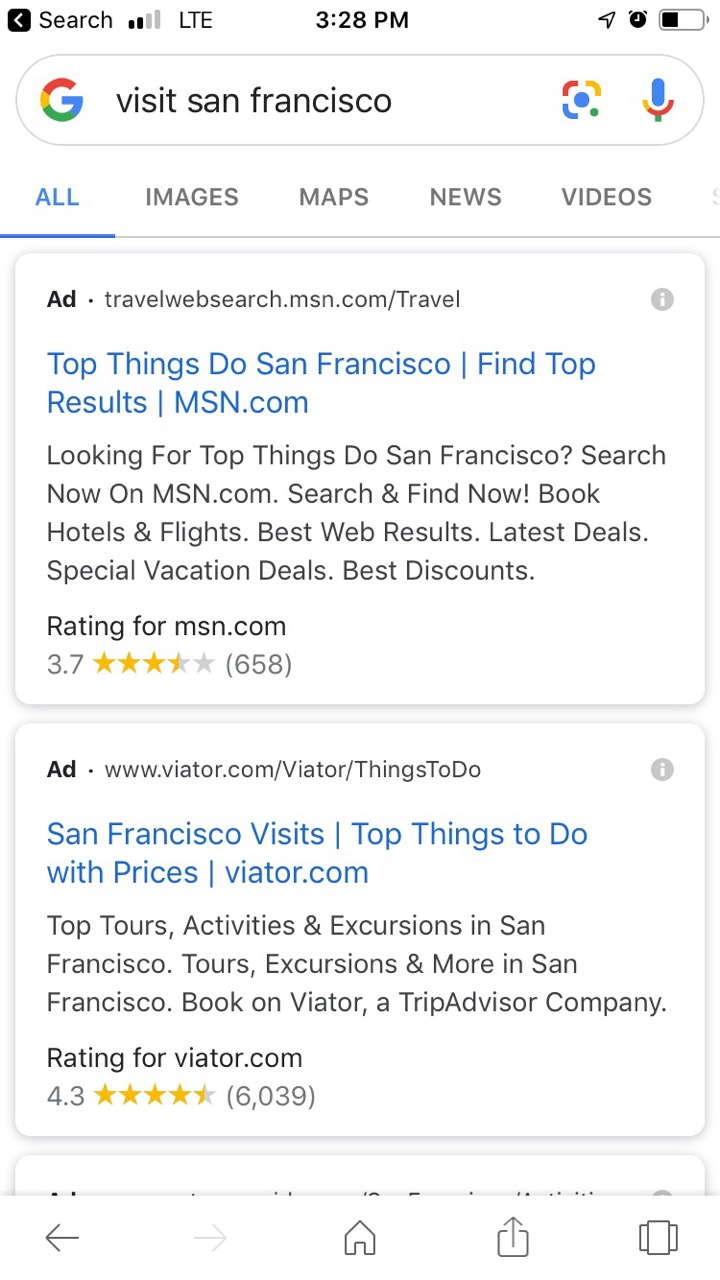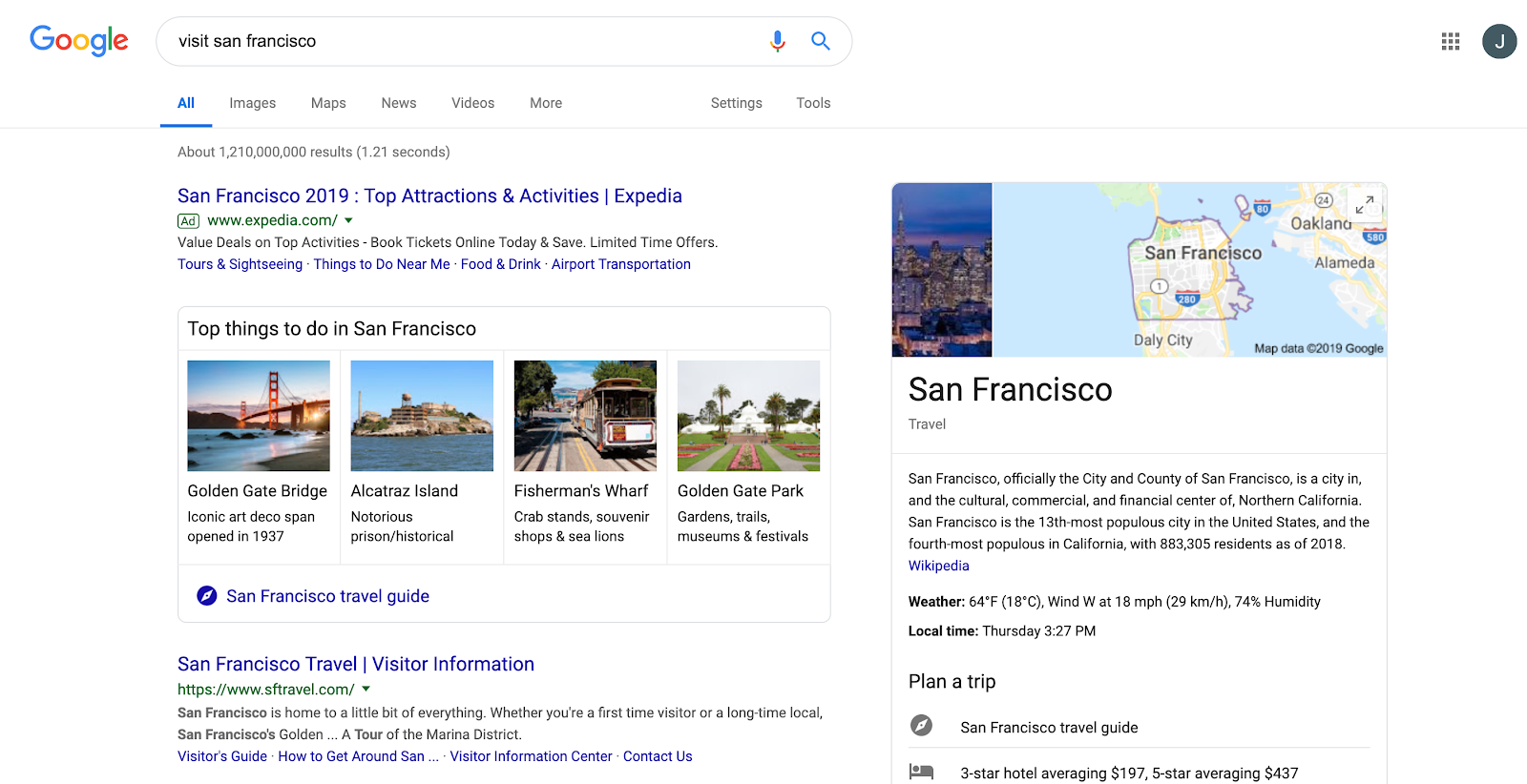This winter break reading list is designed to help CMOs start the new year sharper, more informed, and ahead of the competition

Google’s mobile search has a new look. They have rolled out a mobile search redesign with a black ad label replacing the previous green ad label. You can see the official announcement here.
Search results for “Visit San Francisco” taken on 6/6/19 on both mobile and desktop. Mobile shows the new black mobile label in contrast with the current green ad label on the desktop. The green ad label you see on the desktop was previously used on mobile up until this change. If you take out your phone and do a search on Google you can see it for yourself.
Mobile Search Results

Desktop Search Results

For paid search, the word “Ad” appears bolded and in black. Before the word “Ad” appeared in a green box. The box has been removed and black is the new green. This change provides a more modern look in line with recent web design trends. It is also intended to make it even easier to read and ingest the search results.
This new look brings some branding to the organic search results such as the website icon and the publisher gets top billing. To get your organic search icon or favicon updated, follow Google’s instruction here. Be sure to follow their guidelines so your favicon has a better chance of being displayed.
According to TechCrunch, the branding may even help users better understand where the results are coming from such as identifying if it’s from a well-knowing site or news site. Overall, providing a better search experience.
Advertisers should be watching carefully over the next few months, monitoring mobile click-through rates (CTRs) for any changes, positive or negative. When looking at performance on mobile, keep in mind this recent change.
While there has been no mention of desktop yet, if the mobile rollout goes well, you should keep an eye out for similar tests and changes on desktop.
While it’s still early, Google has reported that a majority of users found it easier to identify websites, and more than two-thirds said it was easier to scan results more quickly.
It’s been reported that some advertisers are already seeing an increase in CTRs. However, it's still too early to know if these early results are sustainable or seen across the board for all types of accounts.
According to the FTC’s business blog, in 2013 they sent a letter to search engines reiterating the original guidance they set in 2002 and updating the guidelines.
In the 2013 letter, the Federal Trade Commission (FTC) mandated search engines to clearly and prominently differentiate between natural results and advertisements. This resulted in removing the shaded boxes around ad and making moves towards the green ad labels that were introduced in 2017 and were in use until this new change in spring 2019.
The guidance provided by the FTC in 2013 states, “visual cues, labels, or other techniques to effectively distinguish advertisements, in order to avoid misleading consumers, and it makes recommendations for ensuring that disclosures commonly used to identify advertising are noticeable and understandable to consumers.”
The FTC’s goal is to make it clear when content is an advertisement and when it’s an organic result. When search engines make changes to results they have to ensure they are compliant with the FTC guidelines. This change does fit within the guidelines and goes above and beyond, particularly since it is easier to identify websites than it was before. Companies using competitors' names in their ad headlines, which you're not supposed to do, will have a more difficult time fooling users into thinking their ad is from someone else. This will make the user's experience better, which is the whole point.
For a more detailed history with images check out Search Engine Land’s Updated: A visual history of Google ad labeling in search results. They have images of Google Search ads from 2007 to the present.
As mentioned above, this change could expand to include desktops. Google is an industry leader and other publishers may follow.
Since this is a change to both paid and organic listings, it's assumed Bing will copy but maybe not right away. As technology continues to develop, the search advertising landscape will develop along with it. The history of search and its relationship to advertising confirms this. For more on SEM history check out our blog on A Brief History of SEM.
Looking to the future, Google has mentioned including Augmented Reality 3D models in search results as well as indexing podcasts so they can be included in search results based on content, not just title. One thing is for sure, search and the associated advertising will continue to evolve with technology to create an even better experience for the user.